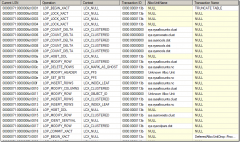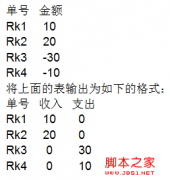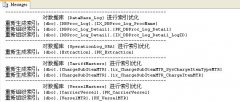SQL Server恢复模型之批量日志恢复模式
你是否想知道为什么事务日志文件会变得越来越大?事务日志有时候甚至会比你的实际数据库文件还要大,尤其是在应用数据仓库的情况下。为什么会发生这种情况呢?如何控制其大小?数据库恢复模型如何控制事务日志增长?在本系列文章中,我们就将一一给出解答。
批量日志恢复模式
批量日志恢复模式与完整恢复模式类似,都预期会有大批量的数据修改操作(例如,创建索引,SELECT INTO,INSERT SELECT,BCP,BULKINSERT),在这种情况下可以最小化日志记录量,因此它降低了性能影响。但是同时代价就是你可能不能做任何时点的恢复了。作为一种推荐的实践,批量日志恢复模式可以与完整恢复模式一起使用,例如,你通常应该在常规操作时设置为完整恢复模式,然后在偶尔发生大批量操作时临时切换到批量日志恢复模式。最后在完成大批量操作以后,再回到完整恢复模式。如果时间点恢复很重要的话,我们非常推荐在切换回到完整恢复模式以后做一次事务日志备份。
与完整恢复模式类似,事务日志文件将会持续增长,因此你需要频繁做事务日志备份。如果没有大批量操作,批量日志模式与完整恢复模式是一样的,你可以恢复到任何时点,只要事务日志包含对数据库后续做的所有变更记录。
优点:通过对一些事务做最小化日志记录优化大批量操作的性能。不会让事务日志由于这些大批量数据操作而显著增长。
缺点:如果日志损坏,或者在最近日志备份之后发生大批量数据操作,存在数据丢失的可能性。因此自最后一次备份后的变化必须被重做。
何时采用:推荐在偶尔发生的大批量数据操作之前切换到批量日志恢复模式,然后在完成大批量数据操作之后切换回到完整恢复模式。采用这种方式你仍然可以恢复到任何时间点,只是你最后一次事务日志备份不包含大批量数据操作,同时可以将大批量数据操作的日志量最小化。
要注意的是,最小化日志记录意味着只记录恢复事务需要的信息,而不支持时间点恢复。在最小化日志的情况下,事务日志基于大批量变更映射(MCP)页做的大批量数据变更记录页轨迹,而不是对每次变化做日志。这种方式数据库日志会更小,但是在你备份事务日志时,它包括了所有变更页,因此即使事务日志非常小,事务日志备份也可能比它更大。
大容量日志恢复模式bulk_logged recovery model
The bulk-logged recovery model minimally logs bulk operations, although fully logging other transactions. The bulk-logged recovery model protects against media failure and, for bulk operations(bcp,BULK INSERT,SELECT INTO), provides the best performance and least log space usage.
The bulk-logged recovery model increases the risk of data loss for these bulk-copy operations, because bulk logging operations prevents recapturing changes on a transaction-by-transaction basis. If a log backup contains any bulk-logged operations, you cannot restore to a point-in-time within that log backup; you can restore only the whole log backup.
Bulk Changed Map (BCM) tracks the extents that have been modified by bulk logged operations since the last BACKUP LOG statement.
If using the bulk-logged recovery model, only details of the modified data pages are logged, allowing for better performance.
Tail Log backup
If your database is using the bulk-logged recovery model, and the transaction log contains minimally logged transactions, the data files which contain the modified pages must also be available. If those data files are unavailable, you will not be able to back up the tail of the transaction log. This is another point to consider when using the bulk-logged recovery model.
However, please note that the situation with the bulk-logged recovery model is identical to the full recovery model if no minimally logged transactions are created in the database
大容量日志恢复模式的工作原理





